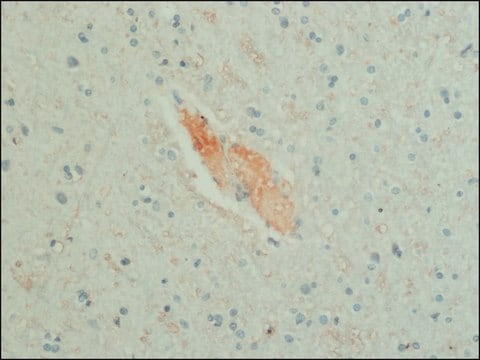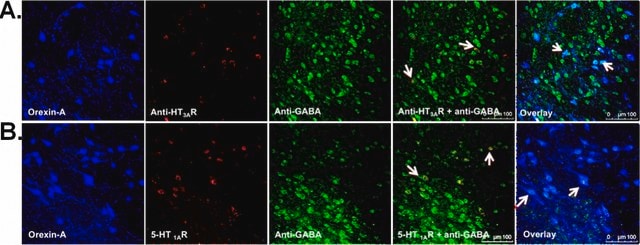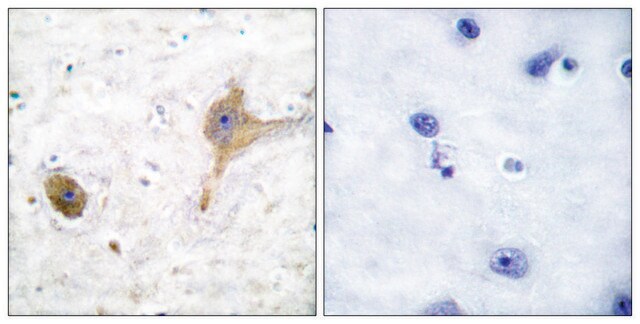SAB4200721
Anti-GABA antibody, Mouse monoclonal
clone GB-69, purified from hybridoma cell culture
Sinonimo/i:
Mouse Anti-Gamma-aminobutyric acid
About This Item
Prodotti consigliati
Origine biologica
mouse
Forma dell’anticorpo
purified from hybridoma cell culture
Tipo di anticorpo
primary antibodies
Clone
GB-69, monoclonal
Forma fisica
buffered aqueous solution
Reattività contro le specie
rat, monkey, frog, mouse, human, gerbil
Concentrazione
~1.0 mg/mL
tecniche
ELISA: suitable
dot blot: suitable
immunofluorescence: 5-10 μg/mL using human pancreatic tumor AsPC1 cell line
immunohistochemistry: 1-2.5 μg/mL using heat-retrieved formalin-fixed, paraffin-embedded human brain and/or cerebellum sections
Isotipo
IgG1
Condizioni di spedizione
dry ice
Temperatura di conservazione
−20°C
modifica post-traduzionali bersaglio
unmodified
Informazioni sul gene
human ... GABRA1(2554)
mouse ... Gabra1(14394)
rat ... Gabra1(29705)
rhesus monkey ... Gabra1(574302)
Descrizione generale
Immunogeno
Applicazioni
- immunofluorescence
- immunohistochemistry
- enzyme linked immunosorbent assay (ELISA)
- dot-blot
Azioni biochim/fisiol
Stato fisico
Esclusione di responsabilità
Not finding the right product?
Try our Motore di ricerca dei prodotti.
Codice della classe di stoccaggio
10 - Combustible liquids
Classe di pericolosità dell'acqua (WGK)
WGK 1
Punto d’infiammabilità (°F)
Not applicable
Punto d’infiammabilità (°C)
Not applicable
Certificati d'analisi (COA)
Cerca il Certificati d'analisi (COA) digitando il numero di lotto/batch corrispondente. I numeri di lotto o di batch sono stampati sull'etichetta dei prodotti dopo la parola ‘Lotto’ o ‘Batch’.
Possiedi già questo prodotto?
I documenti relativi ai prodotti acquistati recentemente sono disponibili nell’Archivio dei documenti.
I clienti hanno visto anche
Il team dei nostri ricercatori vanta grande esperienza in tutte le aree della ricerca quali Life Science, scienza dei materiali, sintesi chimica, cromatografia, discipline analitiche, ecc..
Contatta l'Assistenza Tecnica.










